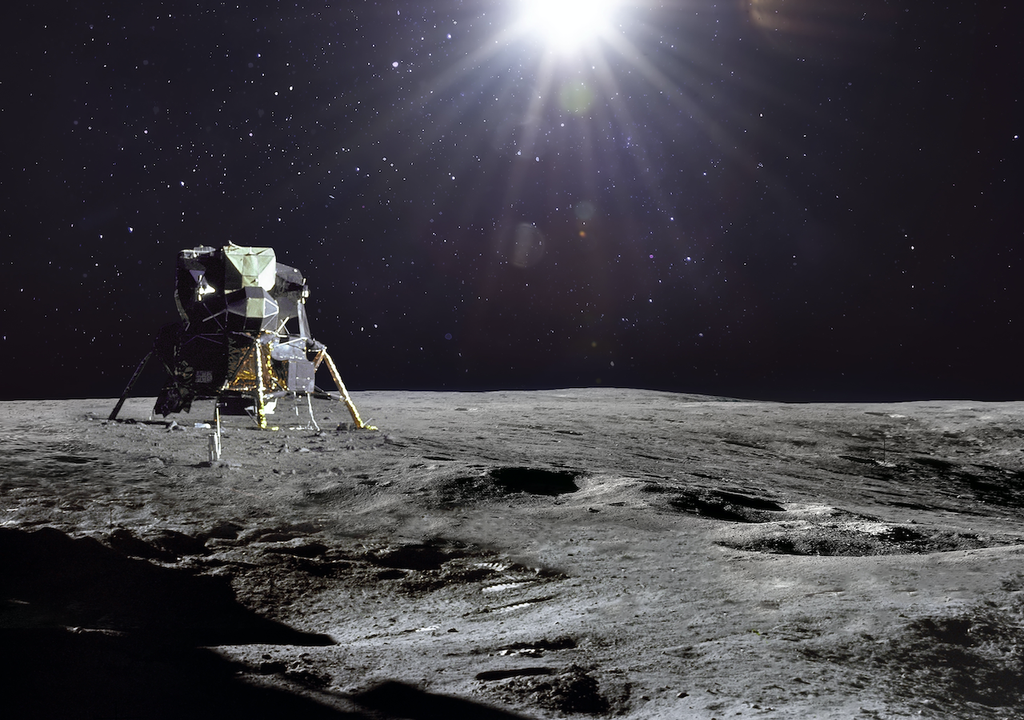Roads can be made on the Moon using light, scientists show
By using high power lasers on Earth, scientists have demonstrated that concentrating light could melt the lunar surface to make roads and landing pads, making way for lunar transport.

It may sound like something out of a sci-fi story, but explorations have been made into establishing a human presence on the Moon, where the introduction of roads may be vital.
Through project Artemis, NASA is studying the Moon to explore ways of living and working on another world, as the organisation prepares for human missions to Mars. Part of their plans for a sustained lunar presence even includes a lunar base camp.
Road blocks to lunar exploration
Moon dust causes problems for lunar rovers to move around, as it can float around when disturbed and damage equipment. This is a major obstacle for exploration vehicle systems on lunar missions. If roads or lunar pads could be introduced it could minimise the problem of dust for vehicles and better enable transport on the Moon.
To create such infrastructure, sustainable approaches would be best, such as in-situ resource utilisation techniques, where existing on-site resources are used. Transporting materials for construction from Earth would be both challenging and expensive, so reusing materials on the Moon would be ideal.
This is why researchers have reported a proof-of-concept in Scientific Reports which shows that concentrating light could create paved roads and landing pads to melt lunar rock into a more solidified substance. They suggest that the relatively small size of the equipment needed could be advantageous for future lunar missions.
High intensity methods
To demonstrate whether the method is viable, the scientists conducted experiments on Earth using a substitute for lunar dust, and lasers instead of concentrated light. Further work may be needed to improve the process, but it could still potentially be replicated on the Moon, they suggest.
In the team, Juan-Carlos Ginés-Palomares, Jens Günster and Miranda Fateri, melted a substitute for lunar soil called EAC-1A, which is fine grained. By using a high power carbon dioxide laser, they simulated how lunar dust could be melted to a solid through focused solar radiation on the Moon.
Laser melting manufacturing of large elements of lunar regolith simulant for paving on the Moon
— Lucas Samuel (@LucasSa54749430) October 12, 2023
By JuanCarlos GinésPalomares, Miranda Fateri and al @ESA_Tech @rjward1775 @AlaskaLawlor @JaraySzabolcs @The_JoeBob https://t.co/0LQ2jt6A3Z https://t.co/OdFoBJT7aD pic.twitter.com/Ayy4noyWKk
To figure this out, they experimented with laser beams of varying strengths and lengths. They found that criss-crossing or overlapping the beam path led to tracking. After trying different approaches they found a strategy that worked using a laser beam with a diameter of 45 millimetres to make triangular geometric shapes, about 250 millimetres in size. These shapes could be interlocked to make wide surfaces for landing pads or roads.
To demonstrate if this really works on the Moon, a next step could be for a lunar mission to take a lens that’s about 2.37 metres squared in size to the Moon, to be used to concentrate sunlight, instead of using a laser.
It is a fascinating time to watch technological developments here on Earth which may one day assist in future space missions, as space exploration keeps expanding its frontiers. An established base on the Moon with roads may become a powerful springboard to other worlds like Mars.








